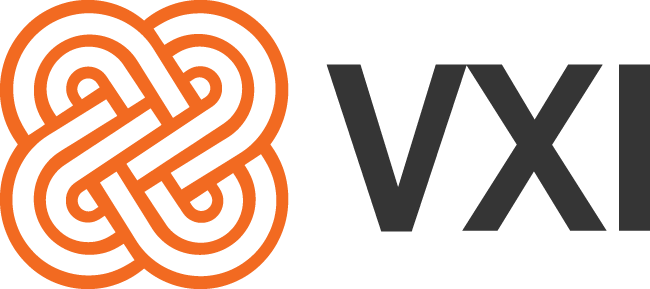
Webinar: Tuesday, April 29th @1pm
Winning at Retention-
Proven Strategies to Reduce Cancellations, Winback Customers & Drive Lifetime Value
Sign up Now
Sales is the air a company breathes. Without sales, growth stagnates – which can end the life of an organization. It’s one thing to secure sales, but another to scale a company based on measurable sales performance.
A common challenge for growing businesses is building a scalable sales model. Most organizations start with a business owner selling themselves and a product they are passionate about. People who believe deeply in what they do can often sell a product – if only because their blood, sweat, and tears are intoxicating to customers. But what happens when that next seller comes into the organization? And then another, and then yet another?
You can try to train other people to sell exactly like you did – but, truth be told, there’s no guarantee it will work. Building a sales team is about direct, authentic relationships between customers and new sellers. As you scale out, it’s worth evaluating the methodologies and processes around building the relationship that already exists.
Every business needs a sales methodology that best represents its product, values, market and goals. Here are the top 10 sales methodologies to consider as you embark on this path.
Over the past 25 years, Target Account Selling has become a standard in the sales world, with more than 1,000,000 sellers trained to convert smaller customers (or smaller groups within larger environments) into bigger and more permanent customers. This methodology breaks larger deals down into smaller components. Using a strategic plan throughout the life of the sales cycle deemphasizes the politics of an account.
Target Account Selling is popular because it automates the entire sales process via Salesforce, making it easier to integrate with existing workflows. The cost of training the staff for target account selling is high, but most experienced people you hire will already understand this methodology.
When Neil Rackham wrote the book SPIN Selling in 1989, I doubt he knew it would still be in use decades later. “SPIN” stands for Situation, Problem, Implication, and Need-Payoff.
It involves asking questions to understand the buyer’s situation, issues, consequences, and situation, respectively.
SPIN selling requires good communication skills and has proven to be a great technique. It focuses on asking questions based on the customer’s preferences in an effort to expose the needs of their organization. The goal of this is to establish trust and help you align your solutions with the services and product you provide. This is a classic sales methodology best suited for smaller, more transactional sales that don’t have a large number of stakeholders involved in the buying process.
SNAP Selling, introduced by Jill Konrath in 2012, makes the assumption that everyone is busy and frazzled. The goal is to speed up the sales process by being Simple, Invaluable, Aligned with the needs of the customer, and a Priority. Part of the focus is about getting “in the head” of your customers. The most important part of this book isn’t the methodology itself – it’s the value chain that it demonstrates.
The Challenger Sale breaks sellers up into five buckets: Relationship Builders, Hard Workers, Lone Wolves, Reactive Problem Solvers, and Challengers. The Challengers are the most successful today, given the prevalence of large sales in enterprise environments.
Instead of unraveling the needs and demands of the customers, the Challenger Sale is used to build consensus in larger teams comprised of many levels of stakeholders. The Challenger Sale simply challenges the customers by making them aware of the pitfalls within their industry. Since its inception in 2011, the Challenger Sale has proven to be quite a successful strategy and is very popular amongst highly technical companies (e.g., software companies) with large sales forces.
The Value Selling Framework creates a repeatable process, or map, based on customer buying processes. By building a process rather than customizing each deal, less management is required – which allows organizations to focus on helping team members improve their sales skills. Having said this, the Value Selling Framework does require more documentation, including qualification, asking documented questions to better understand needs, mapping each opportunity to product capabilities, and building out a plan to close each opportunity.
The basic concept here is that you should sell a solution rather than a product. Since released by Mike Bosworth in 1988, this has been a foundation for a number of other methodologies as well. It was a reaction to the trend of vendors starting to sell solutions that were much more complicated than they had ever before been.
Solution Selling provides a deeper insight into today’s mature and informed buyers. This methodology has evolved over time based on a large network of trainers that help the methodology keep pace with complex and rapidly changing business climates.
Conceptual Selling focuses on the buying process and managing the stakeholders involved when selling to a given organization. Conceptual Selling is about convincing the customer to buy the concept a solution represents vs. a specific product or service. This requires the sales team to focus on listening and excel at gathering information. While gathering information, you provide the relevant information for your products and services and leverage that to gain commitment at each level of the potential customer’s organization.
The Sandler Selling System starts with uncovering the needs of the customer. Then the sales team customizes its pitch based on these needs. It’s about having both parties (the buyer and the seller) equally invest in the sales process. This is accomplished by having sales reps introduce various roadblocks to completing sales early and then provide the customer with options and assistance in overcoming those obstacles.
As with many great things, MEDDIC (which stands for Metrics, Economic Buyer, Decision Criteria, Decision Process, Identify Pain, and Champion) hails from the era of Kurt Cobain. With this methodology, businesses enable sales teams to be effective by helping them compose a plan to close each deal. With good automation in place (e.g., Salesforce integration), an organization is able to direct the best sales rep to every customer. This involves time spent in a qualification stage, reviewing key messaging and working with the customer. If you’re interested in really tight control of your pipeline, this may be the best methodology for you.
CustomerCentric Selling involves turning your sales staff into collaborative consultants who become trusted advisors to customers. This methodology is dependent upon several kinds of behaviors, including closing deals on the customer’s timeline, targeting sales at decision makers, putting the product in the hands of the customer, and focusing on the solution rather than the relationship.
Sales is hard. There are about as many sales methodologies out there as there are talented account executives, sales engineers, and sales executives. These methodologies can help your business flourish – but they require sufficient training, competence, and professional skill to grab and engage today’s informed and mature customer.
A methodology can amplify good sellers (helping them close more business) or punish a high performer (making it harder to close deals). No methodology will be perfect. The tenets of each are eerily similar in some cases, but the underlying concepts are often to listen more, talk less, respect the time of your buyer, run your routes at their pace, respect your potential customers, and be helpful even if they don’t buy your product.
No matter the sales methodology, it all begins with arming a sales team with a good product to sell. However, implementing a methodology will help by getting staff on the same page and providing you with plenty of canned training materials on which to base your training and enablement assets. Now, go and hire some more people to close those deals!

Today’s guest post is by Charles Edge, director of professional services at Apple device management company JAMF Software. He holds nearly 20 years of experience as a developer, administrator and chief technology officer.
Get the latest sales leadership insight, strategies, and best practices delivered weekly to your inbox.
Sign up NOW →